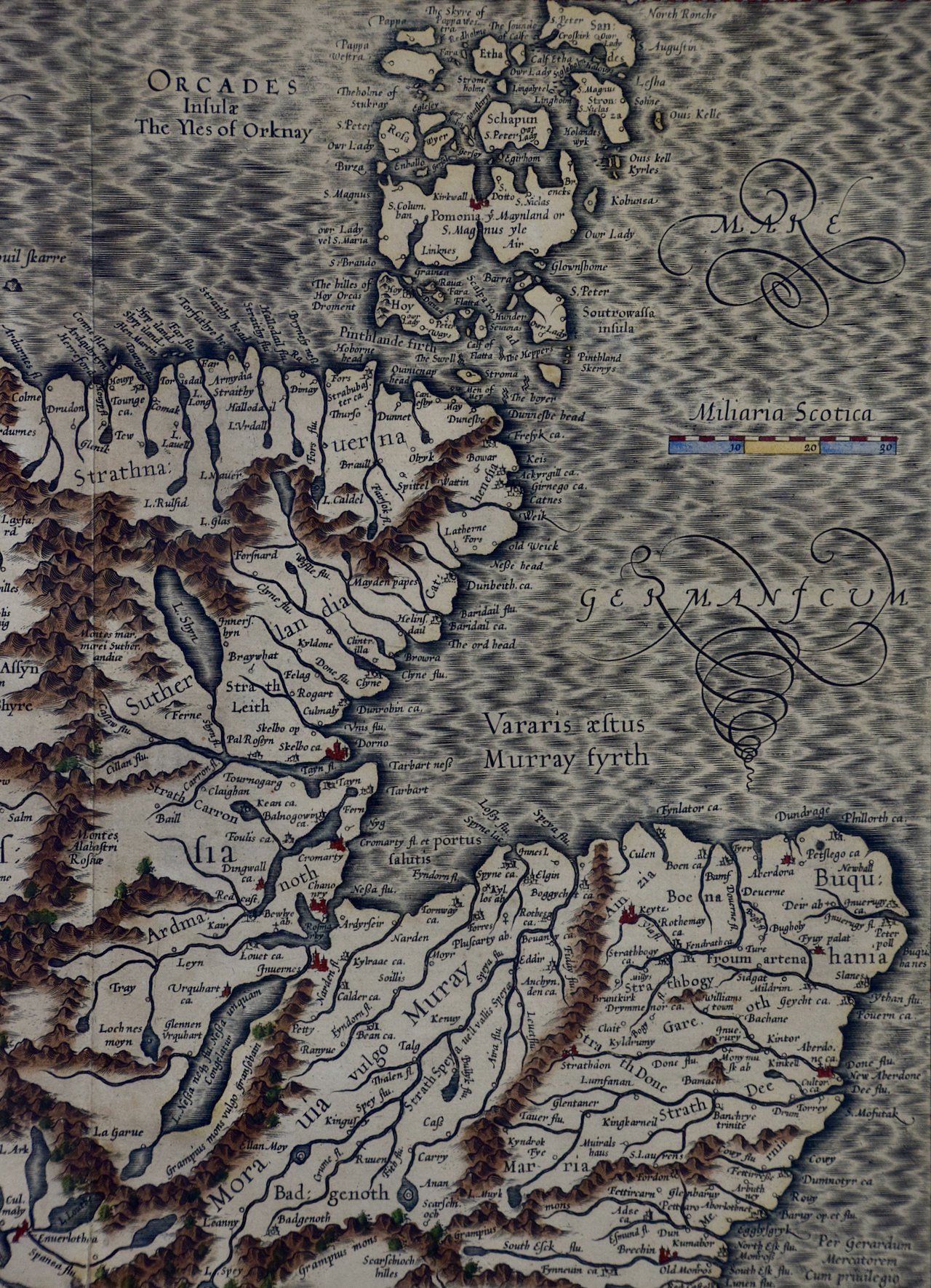Roman Hills, Aqueducts and Roads: An Early 18th Century Map by Jan Goeree
This richly engraved map of Rome and its environs entitled "Urbis Cum Vicis Seu Pagis Adiacentibus Dissertationi III De Aq et Aqueaed Veteris Promae Praemissa Authore Raph Fabretto Gast f. Urbinate" from Francois Desseine's Beschrijving van oud en niew Rome verdeelt in drie deelen. The work was engraved by Jan Goeree (1670-1731) and published by Francois Halma (1653-1722) in Amsterdam in 1704. The map appears mounted on a wall with a glimpse of architecture in the background on the left. A half naked female mythical god with an animal, possibly a greyhound, is seated in the left corner looking at two putti who hold open a book to the title page. Cartographic instruments and a linear scale are below the map to the right. The map depicts Rome with its seven hills (and one additional) to the left and above center, with many roads about the city, including Via Appia (the Appian Way) to the south. The Tiber River (Tiberis Fl.) and the many Roman aqueducts are also depicted.
Creator: Jan Goeree (1670 - 1731, Dutch)
Creation Year: 1704
Dimensions: Height: 20.75 in (52.71 cm)
Width: 24.75 in (62.87 cm)
Medium: Engraving
Condition: See description below.
This richly engraved map of Rome and its environs entitled "Urbis Cum Vicis Seu Pagis Adiacentibus Dissertationi III De Aq et Aqueaed Veteris Promae Praemissa Authore Raph Fabretto Gast f. Urbinate" from Francois Desseine's Beschrijving van oud en niew Rome verdeelt in drie deelen. The work was engraved by Jan Goeree (1670-1731) and published by Francois Halma (1653-1722) in Amsterdam in 1704. The map appears mounted on a wall with a glimpse of architecture in the background on the left. A half naked female mythical god with an animal, possibly a greyhound, is seated in the left corner looking at two putti who hold open a book to the title page. Cartographic instruments and a linear scale are below the map to the right. The map depicts Rome with its seven hills (and one additional) to the left and above center, with many roads about the city, including Via Appia (the Appian Way) to the south. The Tiber River (Tiberis Fl.) and the many Roman aqueducts are also depicted.
Creator: Jan Goeree (1670 - 1731, Dutch)
Creation Year: 1704
Dimensions: Height: 20.75 in (52.71 cm)
Width: 24.75 in (62.87 cm)
Medium: Engraving
Condition: See description below.
This richly engraved map of Rome and its environs entitled "Urbis Cum Vicis Seu Pagis Adiacentibus Dissertationi III De Aq et Aqueaed Veteris Promae Praemissa Authore Raph Fabretto Gast f. Urbinate" from Francois Desseine's Beschrijving van oud en niew Rome verdeelt in drie deelen. The work was engraved by Jan Goeree (1670-1731) and published by Francois Halma (1653-1722) in Amsterdam in 1704. The map appears mounted on a wall with a glimpse of architecture in the background on the left. A half naked female mythical god with an animal, possibly a greyhound, is seated in the left corner looking at two putti who hold open a book to the title page. Cartographic instruments and a linear scale are below the map to the right. The map depicts Rome with its seven hills (and one additional) to the left and above center, with many roads about the city, including Via Appia (the Appian Way) to the south. The Tiber River (Tiberis Fl.) and the many Roman aqueducts are also depicted.
Creator: Jan Goeree (1670 - 1731, Dutch)
Creation Year: 1704
Dimensions: Height: 20.75 in (52.71 cm)
Width: 24.75 in (62.87 cm)
Medium: Engraving
Condition: See description below.
This somewhat whimsical map of Rome is printed on laid, chain-linked paper with wide margins. The sheet measures 20.75" high and 24.75" wide. There is a vertical center fold, as issued and one small spot in the lower right margin of the map on the wall and another at the upper left edge of the sheet. It is otherwise in very good condition.
Francois Desseine was a Dutch librarian who authored the work 'Beschrijving van oud en niew Rome verdeelt in drie deelen' (Description of ancient and new Rome divided into three parts). It was a description of Rome, illustrated with numerous maps and engravings, depicting its people, customs, and architecture, etc.
Jan Goeree (1670-1731) was a Dutch artist, engraver, and art theorist, known for his prolific output of prints and drawings. He was born in Amsterdam and began his artistic training under the tutelage of his father, Willem Goeree, a famous art writer and publisher. Jan Goeree specialized in the production of prints, which were highly popular in his time, and he also created a large number of drawings and paintings. Goeree's work was highly influenced by the Dutch Golden Age, with its focus on realism, detail, and naturalism. He produced a wide variety of prints, including landscapes, genre scenes, and portraits, often working in collaboration with other artists. Goeree was also an important art theorist and published several influential books on art, including "Inleydinge Tot de Al-gemeene Teyken-Konst" (Introduction to the General Art of Drawing), which became a standard textbook for Dutch art schools in the 18th century. Despite his prolific output and influence, Goeree's reputation as an artist declined in the 19th century, and his work fell out of favor. However, in recent years, there has been renewed interest in his prints and drawings, and he is once again recognized as an important figure in Dutch art history.









































